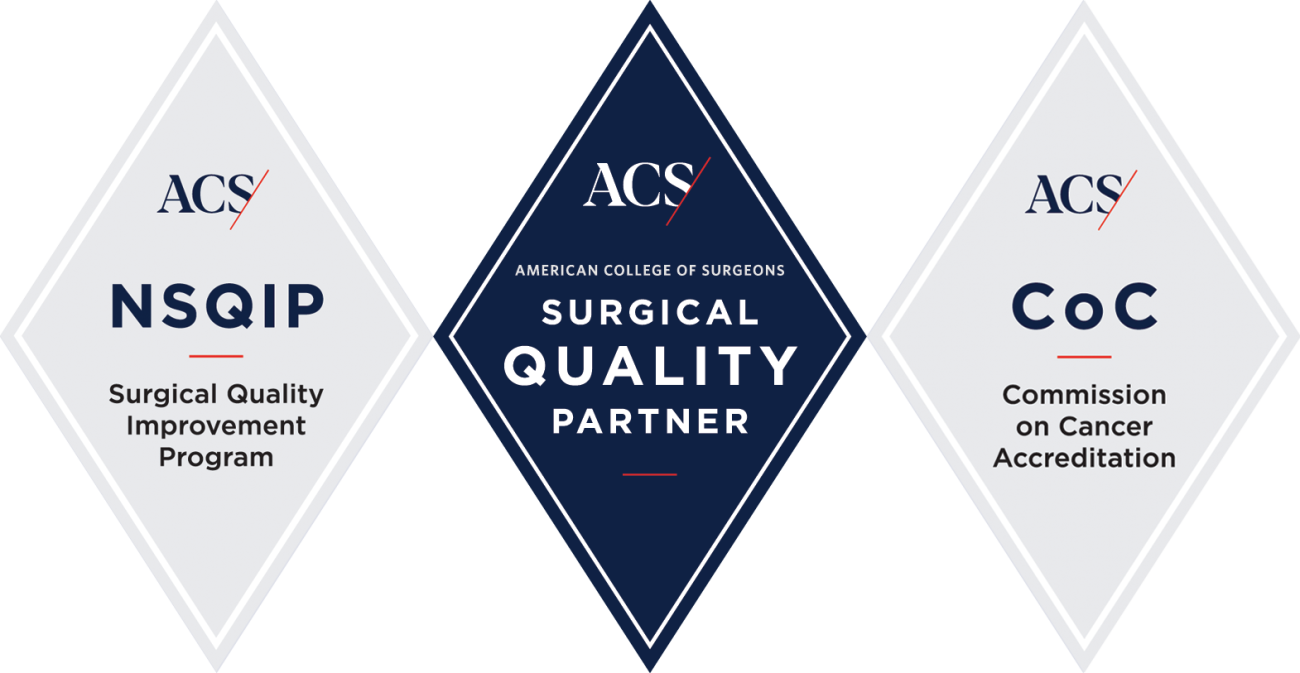Roswell Park offers the full range of surgical options ranging from breast-conserving lumpectomy to radical mastectomy with advanced reconstructive surgery.
Surgery to remove the cancer is almost always part of the treatment for breast cancer. In most cases, surgery is the first treatment. For women with larger or HER2-positive cancers, drug therapy, including chemotherapy may be advised for several months before the surgery. Your surgeon will discuss the best approach for you.
For most women, lumpectomy and radiation is the preferred treatment for many reasons. Until 30 years ago, most women had mastectomy – removal of the entire breast. However, clinical studies done in the 1970’s and 1980’s showed that mastectomy offers no advantage over lumpectomy with radiation for most women. Mastectomy does not offer any survival or other advantages in terms of outcome of the cancer, and the need for drug treatment including chemotherapy is the same regardless of the type of surgery done. Many women treated with mastectomy will still need radiation.
Lumpectomy
Surgery to remove the tumor along with some surrounding healthy tissue, leaving the margins (tissue bordering the tumor) free from cancer. Lumpectomy is usually followed by radiation therapy to the breast.
Breast seed localization
For patients undergoing lumpectomy, when a cancer is so small that the surgeon cannot feel it, the cancer must be “localized” or marked after the precise location is determined by mammography, ultrasound or MRI. Most facilities implant a wire into the breast tissue before surgery, and the surgeon follows this guide wire to the cancer site.
Roswell Park uses a more patient-friendly procedure, called radioactive seed localization, which places a titanium seed into the abnormal breast tissue. The implanted seed contains a small amount of sealed radiation. During surgery, the seed is located using a radiation detection device. Both the seed and the cancer are removed, leaving no residual radioactivity in the breast.
Roswell Park was the first WNY facility to offer radioactive seed localization.
Mastectomy
Surgery to remove all the breast tissue. The most common type of mastectomy today is called a simple mastectomy, in which the breast tissue is removed, but the muscles in the chest wall are spared, preserving arm strength. If it’s necessary to remove all the lymph nodes in the armpit, the operation is called modified radical mastectomy. Some women who undergo mastectomy may have immediate breast reconstruction surgery right away. You should learn about your options for breast reconstruction, even if you defer your decision for a later time.
Lymph node surgery
Surgery to remove one or more lymph nodes in the tumor area. Nodes are then examined for cancer by our pathologists who focus exclusively on analyzing breast cancers. Checking the lymph nodes is important for women with invasive cancer, but not necessary for women with noninvasive cancer. If the cancer has spread to lymph nodes in the armpit (called axilla) there is a greater likelihood that the cancer may have spread to other organs. This information is important for helping your care team decide which drug treatments such as chemotherapy are best for you.
Lymph node surgery options
Surgeons aim to remove only as many lymph nodes as is necessary. While these operations are safe, removing a greater number of lymph nodes increases the likelihood of experiencing lymphedema.
- Sentinel lymph node biopsy is a procedure used most commonly and if the lymph nodes are not enlarged. At the same time as you have the surgery on the breast, your surgeon removes the three to four armpit lymph nodes closest to the tumor to send to the pathologist to determine whether they contain any cancer cells.
- Lymph node dissection is the procedure that removes most of the lymph nodes in the armpit. This is necessary when a patient has many lymph nodes that contain cancer.
Lumpectomy or mastectomy?
For some women, the choice between undergoing lumpectomy versus a mastectomy is very difficult. Women may think that when there is a choice between a big operation and a smaller operation for cancer, that the bigger surgery is better. However, this is not true for breast cancer.
For most women there is no advantage to mastectomy. In the right circumstances, lumpectomy is usually the preferred treatment over mastectomy because it requires much less surgery and is easier on the patient. Most importantly, lumpectomy provides the same chance of a cure as mastectomy, if not better. Recent evidence suggests that overall survival may be better with lumpectomy, possibly because women who undergo lumpectomy also have radiation therapy that helps control any microscopic cancer cells in the skin of the breast.
Mastectomy is still necessary for some women. Women with large breast cancers or women who have two separate areas of cancer in the same breast will likely need mastectomy. In addition, women who have a genetic alteration in a breast cancer gene that causes a very high risk of a second breast cancer may choose to have mastectomy.
What you need to know
Pros | Cons | |
|---|---|---|
Lumpectomy |
|
|
Mastectomy |
|
|
Neither surgery has any bearing on whether or not you’ll need chemotherapy.
Having more extensive surgery does not mean you can avoid chemotherapy. (The need for chemotherapy is determined by how much and what type of cancer is present, as well as the patient’s health, but not by what type of surgery is chosen.) However, other factors may weigh in the choice. For example, women who cannot have radiation therapy, due to previous chest radiation treatment or a connective tissue disorder, may need mastectomy. A lumpectomy may be safer for women with heart problems or diabetes because they won’t be on the operating room table as long, or may not heal a large incision well.
Breast reconstruction surgery
Roswell Park's plastic and reconstructive surgeons coordinate with your breast cancer treatment team to plan your reconstruction procedures around your other cancer therapies, for optimal healing and outcome. Visit our breast reconstruction surgery page to learn from our experts.


